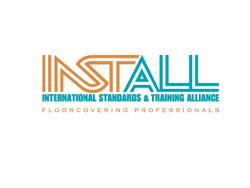Install Offers Best Practices for Flooring Specification
Washington, DC, July 8, 2020-Install, aligned with the United Brotherhood of Carpenters and Joiners of America (UBC) recently put even greater emphasis on working hand-in-hand with commercial architects and designers to develop best practices for specifying flooring throughout COVID-19 and beyond. While these rules mainly apply to healthcare facilities, they can be used in several commercial applications including hospitality settings, institutional design and more.
Specifiers should involve and work directly with each client to analyze the facility, patient and staff needs and identify the best combination of attributes for each specific project. By focusing on these five areas, architects and designers can ensure safe and healthy facilities, balance aesthetics and cleanability:
• Compatibility with Disinfectants: Ensure the finish or texture of the flooring will not be ruined by disinfectants and cleaners that can kill surface bacteria. While the CDC recommends standard disinfectants or soap and water for general businesses and home environments, hospital-grade disinfectants are much stronger.
• Cleanability and Maintenance: Not only should flooring be able to stand up to disinfectants, it should be easy to clean quickly and efficiently multiple a times a day without disrupting operations or special equipment.
• Aesthetics: The goal in healthcare environments is to make a facility look and feel like home so it is more comfortable for patients and visitors. The flooring should provide the right aesthetics to promote healing and create a restful and calm environment.
• Porosity: Porous surfaces are a haven for germs and bacteria, including COVID-19. Contractors recommend non-porous or semi-porous sheet flooring that can be heat-welded, or flash coved. Polished concrete and epoxy flooring provide a non-porous surface as well.
• Facility Benefits: Finally, does the flooring provide the right benefits for the space? Factors to consider include acoustics, rolling loads, traction, long-term maintenance, replacement costs, etc.
INSTALL and the UBC have long understood the importance of health and safety on the jobsite, especially when it comes to mastering Infection Control Risk Assessment (ICRA) standards and protocols. ICRA focuses on how to contain pathogens, protect patients, and work without disrupting adjacent operations.
